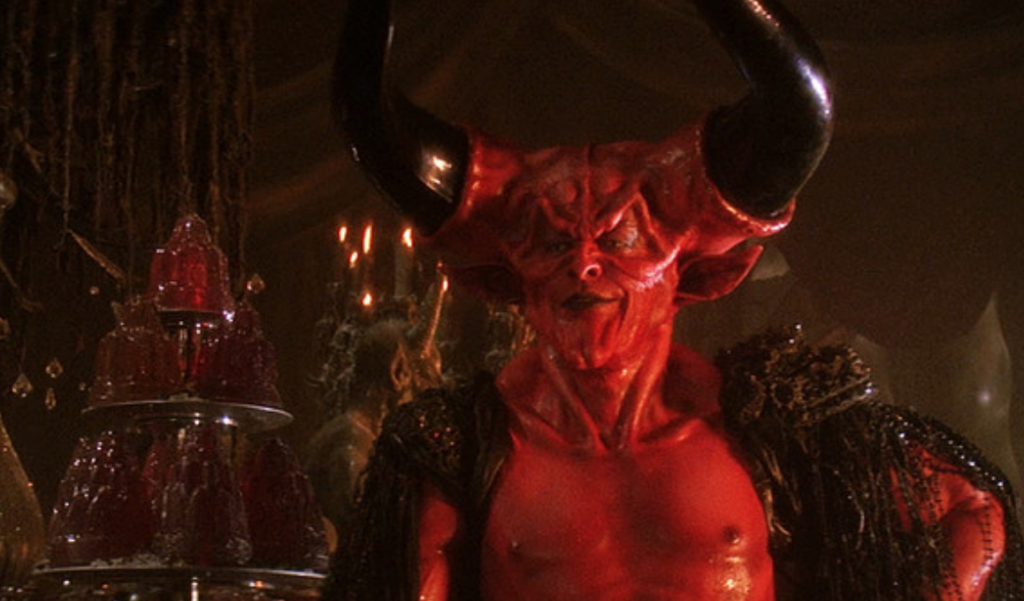
All stories require a core antagonist (the force/character that is responsible for generating the story problem in need of resolution). This said, there are many different types of antagonists. While all villains are antagonists, not all antagonists are villains.
The villain might only be one of many types of antagonists, but they have a power of transcendence that few other archetypes can match.
But since we went there. What goes into creating a worthy villain? How can we create a character that evolves beyond paper caricature and passes into timeless myth?
Moriarty, Darth Vader, Loki, Buffalo Bill, Voldemort, Dracula, Jack the Ripper represent the deepest dark necessary so our heroes can shine the brightest white.
When we think of our favorite stories, how often do we remember the villains, first? There’s something so alluring about the darkness.
This said, it’s the artist who learns how to mold the darkness into something timeless, a character retold every generation in new forms.
Breaking Bad: What Makes a Villain?
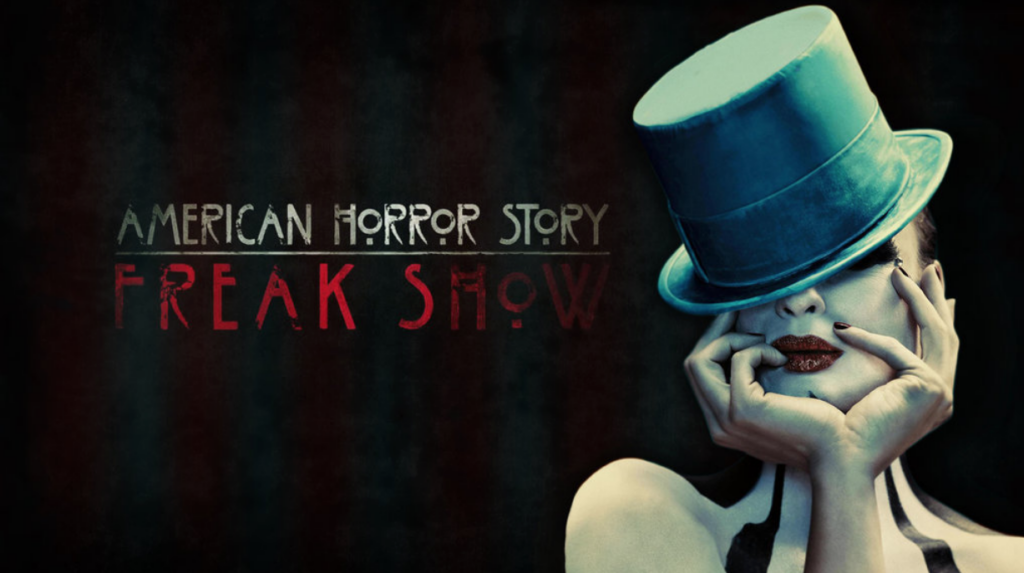
I watch a ton of movies and television series. I also read roughly 1-3 novels a week. I’m always studying, breaking stories apart so that I can understand them better. I do it for my fiction, but also so I can share what I learn with you guys.
Though the series isn’t for everyone (it’s pretty gory), I particularly love FX’s American Horror Story (Seasons 1-4) for studying villains.
***Everything was pretty ‘meh’ after Jessica Lang left the cast, but that’s just my personal POV.
Anyway, AHS is one of those shows that you have to get a few episodes into before you connect, namely because it is often cast with truly despicable characters.
It isn’t until you get a few episodes in that the writers start peeling back the layers and exposing the delicate undersides of the villains…and that’s when you really begin to care for them.
I know. On the surface, this seems bizarre, but it’s true. The early seasons of AHS are some of the best writing out there.
Jessica Lang almost always played the core antagonist in each season of AHS. Of all the seasons, though, Season Four Freak Show was my absolute favorite. It’s by far one of the most superlative stories on the small screen, masterful characters…which is why I’m referring to it today.
Btw, there is a bit of spoiler alert, but it’s necessary. So what do we do to really make the villain POP?
Give the Villain a Sympathetic Goal
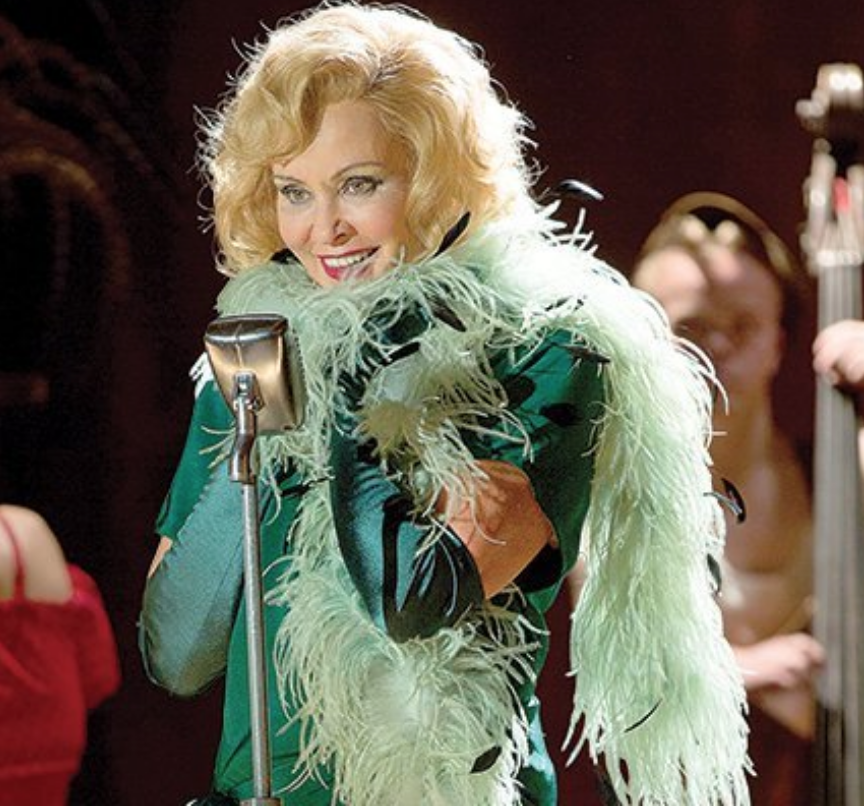
In Season Four of AHS, Lang plays Elsa Mars. Mars is a self-centered, lying, conniving, murderous woman. But she is a deeply flawed and tragic character. Her goal is two-fold.
First, she wants to become a star in Hollywood. Secondly, she wants to build the best Freak Show in the world.
As a young woman, Elsa is victimized by a man who promises her the starring role in a movie. What he fails to tell Elsa is she has the starring role in a snuff film.
He films another man taking a buzz saw to both of Elsa’s legs then leaves her for dead. Through the sympathy and miraculous skill of an artist-sculptor, she’s saved and given life-like prosthetics and appears ‘normal.’
But this tragedy creates a horrible insecurity. She starts her freak show because deep down, she knows she’s a freak, too.
This makes her feel almost a maternal duty to collect the disfigured. To gather the tragic souls the world casts away and give them a home.
Villains are Heroes of His/Her Own Story
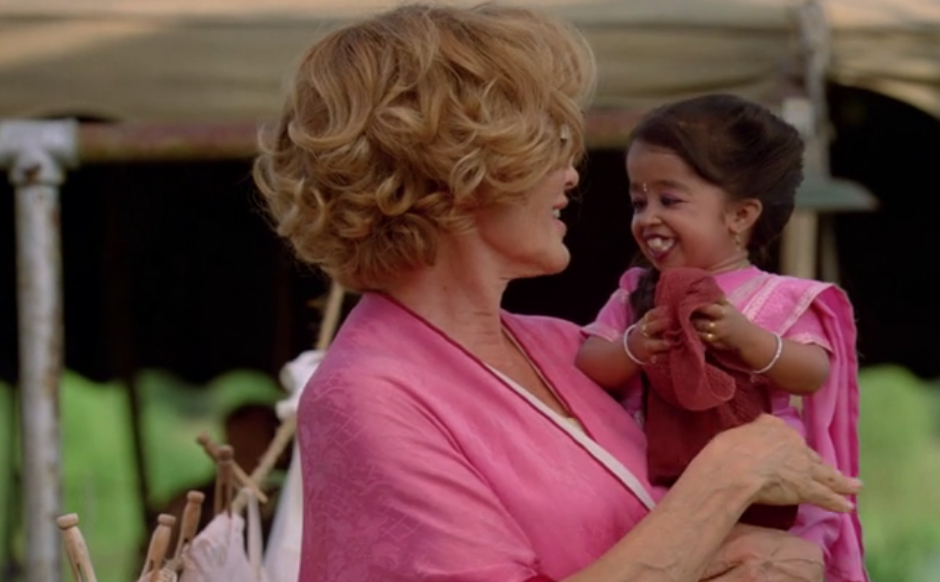
Elsa is a mother figure. Under the circus tent, her ‘children’ are stars and they are a family. She knows what life outside the show is like for a freak (she’s lived it). She also appreciates that she is a very different kind of freak.
She has the ability to blend into society. Her children do not.
Make the Villain Conflicted
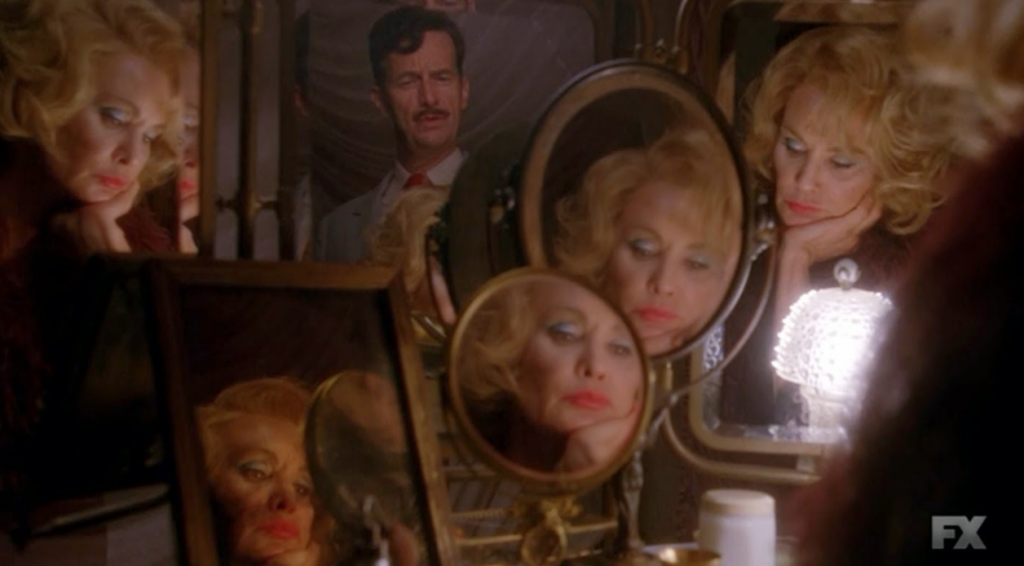
Mars is a very troubled and conflicted character. Her goal to take care of her charges and her desire to become famous in Hollywood are always in conflict. Also what makes Elsa so good is also what makes her so bad.
She is relentlessly ambitious (good), but she is relentlessly ambitious (bad).
Remember that our best self and our worst self are often opposing edges of the same blade. This is true for protagonists (heroes) as well.
I see this even in myself. I have a compulsive personality. This is good (2000+ blogs), but can be very, very bad. I latch onto something like a pit bull and don’t let go…but sometimes I’ve latched onto something I should let go of (every ex-boyfriend ever).
As I like to say…
There is a fine line between persistent and stupid.
The reason this duality makes for a layered villain is that great fiction acts as a mirror and reflects a degree of reality back to the reader. When the reader sees the duality of the villain, she is also seeing the duality in herself.
That is the part that can be deeply disturbing.
Maybe we believe we are incapable of murder, but are we really? Or have we simply been blessed with the right life circumstances that have permitted us to never have to really get an answer to that question?
Give the Villain Noble Goals
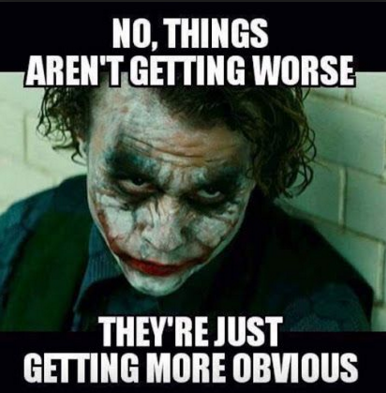
To dovetail off the last point I made, Elsa does some truly detestable things…but we do see there is a not-so-evil motivation behind her actions. Thus, we sympathize and I think that is one of the ways a good villain can truly get to us.
We see the ugliness in ourselves, the great evil we might be capable of in the right situation.
Elsa is profoundly insecure. She created the freak show largely to ameliorate the pain from her deep psychic wounds. If she owns and runs the show, she can be the main attraction. But again, Elsa’s goals collide with the intensity of a tectonic plate shift.
She knows the show has to make money because she clothes and feeds and shelters her ‘monsters.’ But, to be blunt? She’s also greedy. So when another act overshadows her own? Her greed and her insecurity collide.
Make the Villain’s End Tragic
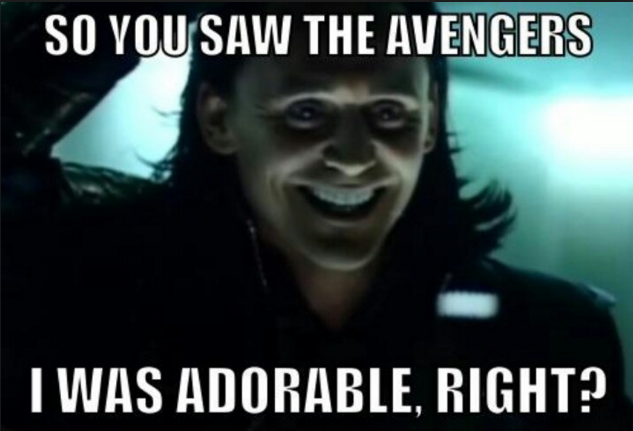
For me, the best villains are the ones we almost are silently rooting for and are really bothered by that. Elsa is one of those characters that in one episode you hate her and in the next you’re rooting for her and the end of the season is beautiful and tragic.
My friend NYTBSA James Rollins says he knows he’s done his job when the reader cries for the villain at the end.
This is also why NYTBSA Allison Brennan and I have had a long-running argument that Hannibal Lecter is actually not a villain but an antihero.
Allison thinks he’s a villain, but I posit that Hannibal is written SO well, he actually blurs those boundaries and becomes somewhat of an antihero.
Y’all KNOW you cheered at the end of Silence of the Lambs when he said he was ‘having an old friend for dinner.’
And what is SO EPIC about this is that the guy he is going to eat is a law abiding citizen who technically has done nothing illegal…but we still are rooting for Hannibal (a serial killer).
And that freaks us out more than a little bit.
Another great villain? The Goblin King from Labyrinth. Every woman over the age of thirty is still wondering why the hell Sarah didn’t take the deal.
Now for THIS Little Slice…

There is another kind of villain, a villain who deeply upsets us and who’s end is a joyous event. We cheer.
Audiences don’t want this type of villain defeated. Fans don’t want them dead. We want them OBLITERATED.
Salt the very Earth with their souls.
I loved Cercei Lannister from Game of Thrones, but largely because she was so complex. We loved her, hated her, but mostly loved to hate her. Which was why she deserved so much better in the end.
But, we’ve already talked about Game of Thrones...a lot.
Michael Connelly’s The Lincoln Lawyer has the best example of this type of villain. The movie is great but the novel? O…M…G. The villain is positively terrifying.
Why?
Namely because this villain exemplifies what we fear most (and what protagonist Mickey Haller also fears).
That we won’t recognize pure evil when we see it.
At first glance, Roulet is the guy every girl would love to land. He’s smart, rich, handsome and charming. But he is also a stone cold killer who exacts suffering for his own pleasure.
What makes this character so disturbing is, like Haller, we believe Louis Roulet is innocent and that he’s been the victim of a terrible scam.
So when we hit that pivot point where we realize we’ve been duped? It rattles us to the core.
Venus Flytrap Villains
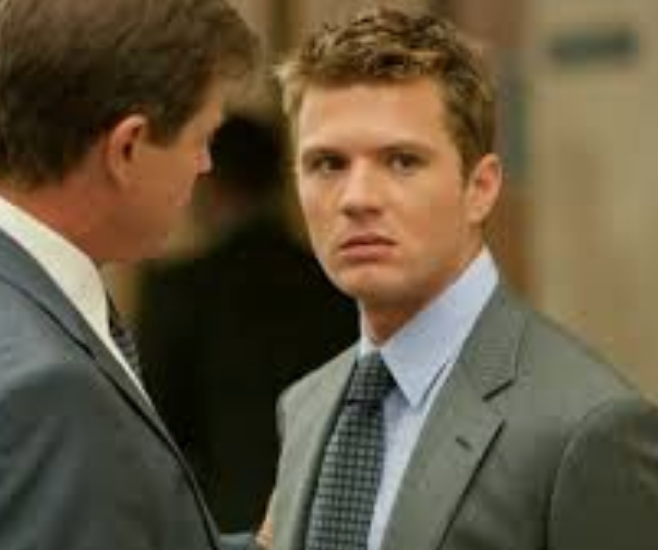
This type of villain will exhibit the same traits mentioned above, but they are all a deception. This villain is a Venus flytrap. The villain looks like a good guy, but is actually disguised death.
In The Lincoln Lawyer, Roulet has a sympathetic goal. He is an innocent man. The prostitute has snared him in an elaborate frame job so she can sue him for damages in civil court and use him as her ticket out of turning tricks.
Roulet is conflicted. He fails to share various pieces of vital information with his lawyer because he is ‘protecting his mother.’
He doesn’t want to upset her and he cares deeply about her perception of him (E.g. he fails to mention he was going to Reggie Campo’s place to pay for sex).
Roulet has noble goals. For instance, Roulet claims he discovered his mother (also a real estate agent) raped and brutalized in a home she was showing. This is why he carries a knife. Trauma. Protective instincts.
He tells Haller that real estate agents often meet clients in homes alone and there is no real way to vet that they aren’t psychos (um irony), so he carries for protection.
Notice how Connelly hits on ALL the notes of a villain, but camouflages them as a hero.
THIS is why our world turns upside down when we realize it is all a lie. Roulet does not have a sympathetic goal at all!
He’s a sado-mysogynistic killer and his only goal is to exact suffering…then destroy another man’s life by framing him for his crime.
This villain is not conflicted at all. He is very well aware of what he’s doing. He’s narcissistic and believes he is above the rules that govern society.
He does not have noble goals. His goals are as black as they come. This is why, unlike a villain like Elsa Mars, when Roulet meets his end? We cheer.
In fact, regarding this, I actually prefer the ending in the movie where Haller’s motorcycle gang clients beat Roulet within an inch of his life before he’s hauled to jail.
A good way to make this kind of villain work is to create a deflection. Cast an innocent character as the ‘villain.’ It is essentially a ‘bait-and-switch.’
In the case of Roulet, the prostitute he brutalized carried the mantle of villain until Act Two.
Practice Makes Perfect
Overall, much of what goes into crafting legendary villains (or any character for that matter) has to do with study and practice. Watch television or movies actively. Take notes. Pay attention. Read a LOT of books.
Why did a villain resonate? Why not? Can you do something similar but different? Perhaps better?
Also PRACTICE. A fantastic way to hone our character-building skills is to use them…as much as possible. We have a brand new class that’s actually PERFECT for this. Maria Grace will be teaching how to write novellas this Friday (use Bite10 for $10 off).
While the full-length novel is what most of us are striving to complete, the novella is wonderful for cultivating an audience and for building skills. How we get good at writing villains is by writing a LOT of them.
The novella is a fantastic place to hone those skills (and also a lot of modern readers have the attention span of a crack-addicted fruit fly).
If we look at the authors most renowned for crafting villains—Stephen King, Neil Gaiman, Ray Bradbury, Philip K. Dick—they wrote a LOT of short form works. Not only are many of these shorter works now considered ‘literature,’ but filmmakers later adapted many of these works into film. So I STRONGLY recommend her class.
***Remember a FREE recording is included in purchase price.
Also for additional help beyond this blog, I’ll be teaching Dark Arts: Building Your Villain next Tuesday (use Thrill10 for $10 off).
What are your thoughts?
Does this help you understand how to give depth to your villains? What are some of your favorite villains from the page or even the screen?
I love hearing from you!
And to prove it and show my love, for the month of NOVEMBER, everyone who leaves a comment I will put your name in a hat. If you comment and link back to my blog on your blog, you get your name in the hat twice. What do you win? The unvarnished truth from yours truly.
I will pick a winner once a month and it will be a critique of the first 20 pages of your novel, or your query letter, or your synopsis (5 pages or less).
In the meantime, PLEASE treat yourself to a class!
Upcoming LIVE CLASSES Through November
Yes, I know most of us will be doing NaNoWriMo, which is why a FREE recording is included with your purchase.
Bite-Sized Fiction: How to Plot a Novella
FRIDAY, NOVEMBER 8th 7:00-9:00 p.m. EST (NYC TIME). Use Bite10 for $10 off.
Dark Arts: Building Your Villain
November 19th, 2019 7:00 P.M. tp 9:00 P.M. EST (NYC TIME). Use Thrill10 for $10 off.
Tick Tock: How to Plot Mystery Suspense
THURSDAY, November 21st 7:00-9:00 p.m. EST (NYC TIME). Use Thrill10 for $10 off.
Why Are We HERE? Scenes that HOOK
FRIDAY, NOVEMBER 22nd, 2019. Use Thrill10 for $10 off.
ON DEMAND CLASSES
The Art of Character: Writing Characters for a SERIES ON DEMAND
Use Binge10 for $10 off.
How do we create characters that readers will fall in love with, characters strong enough to go the distance? Find out in this THREE-HOUR class that also comes with detailed notes and a character-building template. Again, use Binge10 for $10 off.
This class dovetails with my previous class:








8 comments
2 pings
Skip to comment form
Whenever I think of a good villian, I think of Norman Bates. You ended up feeling sorry for the guy though he was a killer. Great article.
Hi, Kristen! Taking a shot here… you mention the Novella plotting class. I’ve registered for the class, but now it turns out I won’t be home to participate live. Do you have an avenue by which I can submit a question ahead of time?
Author
Sure. Email me at kristen at wana intl dot com and I will pass it on 🙂 .
Thank you! I shall organize my thoughts ASAP.
Love this post about the villains. Thank you Kristen.
My favorite Villain? John Milton (Satan) played by Al Pacino in The Devil’s advocate comes to mind.
Oh boy, villians. They can be some of the most complex and interesting characters to write. But how much “screen time” they receive, ultimately depends on the nature and setting of the story you’re writing. Are there other elements which provide just as much conflict, such as social mores and attitudes, past history between main characters, or perhaps a loss someone is still overcoming?
My H/h are dealing with all three, with the added complication someone tried to abduct my heroine in her teens and seriously injured her. As she and the hero are reconnecting with each other and trying to establish a positive relationship, it appears history is trying to repeat itself. Only the villain doesn’t move in the same circles they do, and is only able to engineer a couple of encounters with the heroine. The rest of the time, he’s a stalker. Which is more frightening? The villain who is always in your face? Or the one you know is out there somewhere, and you never know when they will strike?
“The novella is a fantastic place to hone those skills (and also a lot of modern readers have the attention span of a crack-addicted fruit fly).” This last part is now one of my favourite quotes! I ran into the living room and repeated it to my husband. We both broke up laughing! Lots of great ideas in this post and a wonderful collectible line to pull out in the future! Thank you, for the info and the laughs. ???
V. L. Murray (Natter and Review)
I always had trouble dipping into my dark side and creating villainous characters. When I published my first novel, I had the plot and character arcs ready. It was a struggle to flesh out the villain and I am still learning. Even my beta readers and reviewers at https://usabookreviewers.com loved the story and the protagonist. The anti hero was lacking in character. He was weaker and not as impactful. Trying to read some dark mystery and horror novels for inspiration. My take away from this blog is to make the villain more human with shades of grey.
[…] a dream, Chris Winkle has 18 ways for protagonists to contribute, Kristen Lamb discusses crafting a villain of legendary substance, and Sharla Rae gives us a comprehensive guide to writing about […]
[…] The Villain: Crafting Scoundrels, Sinners & Substance of Legends […]